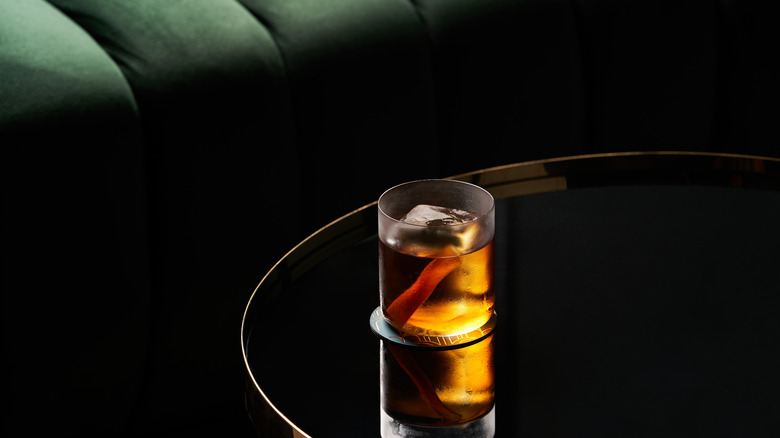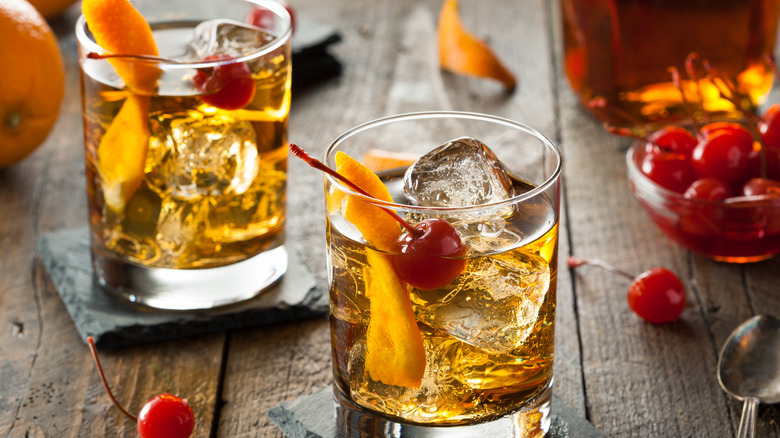The History Of The Old Fashioned Cocktail Is A Bit Blurry
The Old Fashioned was old-fashioned before it was Old Fashioned. Confused? Let us explain. By most accounts, the cocktail we know as the Old Fashioned debuted as a basic whiskey cocktail (via Food52). Prior to the mid-19th century, it was a straightforward blend of spirits, sugar, bitters, and water. At least that's the account in Robert Simonson's 2014 book, "The Old Fashioned." According to Food 52, Simonson says the name Old Fashioned stems from 19th-century cocktail purists snubbing their noses at new-fangled concoctions made with added ingredients they deemed unnecessary. It makes sense. We can almost hear a frustrated bar patron beseeching the bartender, "I just want an old-fashioned cocktail!"
Another widely accepted origin story suggests the fruit-muddled Old Fashioned we know today was a byproduct of Prohibition, when illegal imbibers attempted to mitigate the harsh taste of bootleg liquor by adding sugar and fruit. Post-prohibition, some bartenders stuck with the sugar (or fruit, or both), but incorporated them into the cocktail as a way to elevate — not disguise — the whiskey.
That's where things got extra blurry, ultimately dividing Old Fashioned lovers into two categories: purists (whiskey, sugar, and a dash of bitters) and experimentalists (the purist version with fruit, muddled fruit, and myriad combinations of spirits).
Evolution of a classic cocktail
Mixologist extraordinaire Dale DeGroff, aka "King Cocktail," is an experimentalist. DeGroff is widely acknowledged as the bartender who single-handedly started the revival of classic pre-Prohibition cocktails, including the Old Fashioned, in the 1980s, notes Robb Report. During a stint at New York City's iconic Rainbow Room, the author and two-time James Beard Award winner created a riff on the Old Fashioned that included muddled cherries and oranges. It was a hit, but it wasn't DeGroff's only twist on the Old Fashioned. More recently, he created a version that includes not only muddled cherries and oranges, but also a touch of tawny port and a dash of pimento bitters (via Robb Report).
That's the thing about the Old Fashioned: It's always evolving. There are even regional variations within the United States. According to Food 52, Wisconsin lays claim to a mash-up that replaces whiskey with brandy and a touch of soda. And some bartenders swap out the muddled fruit for an orange-and-cherry flag, an orange slice and a cherry skewered on a cocktail pick.
That's just fine with DeGroff, whose own experiments started the post-Prohibition craze and who cites the Oaxacan Old Fashioned, based on a blend of reposado tequila and mescal, among his favorite variations. It's all good because, as DeGroff told Food 52, "The Old Fashioned has been adopted by the craft movement in the new millennium as a sort of mother sauce, a base."
Which, we guess, means today's Old Fashioned may already be old-fashioned.

